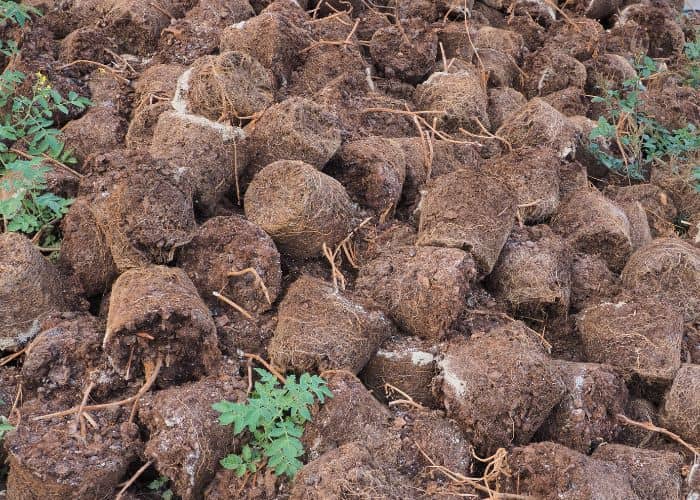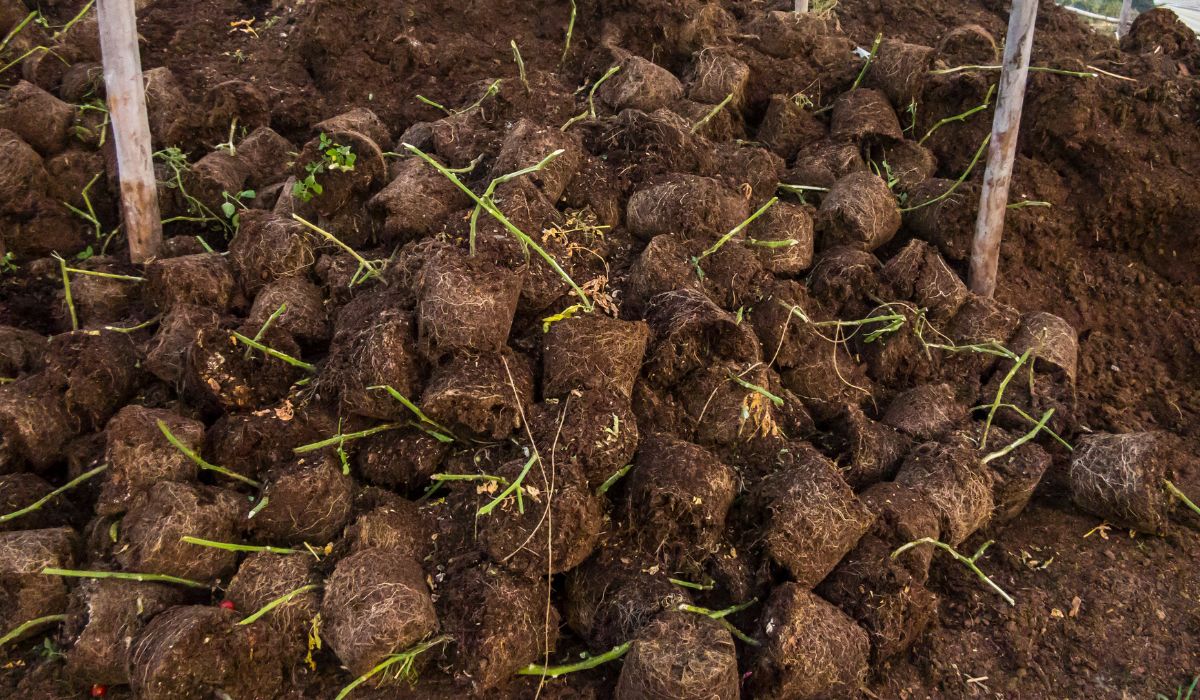Many gardeners want to know, Does Peat Moss Make the Soil Acidic? In this post, we will answer all your questions relating to this topic. You can learn about the pros and cons of using peat moss and, more importantly, how to use it correctly.
Peat is the end product of decomposing vegetation such as trees, shrubs, and grasses. As these organic matters degrade over time, they form a dark brown substance called peat. This is then used as an absorbent material for water in areas that are prone to flooding and poor drainage.
In the gardening world, peat moss is often touted as the best soil amendment or fertilizer there is. However, not many people realize that peat moss can actually be an acidifying agent in the garden. This is a problem when using peat moss at the base of plants or in raised beds because it can cause root damage and inhibit nutrient uptake. Find out more in our article below.
What Is Peat Moss, And How Is It Used?
Peat moss, also called sphagnum moss, has been used for centuries in landscaping and gardening. It is a natural, organic material made up of decayed plant matter. It’s used as an insulator, for growing plants in containers or as mulch, and as a soil amendment.
It improves the quality of soil by increasing aeration and water retention. You can also use peat moss as a substrate for growing cuttings, as a base for your own peat pellets, to line plant pots, as a soil additive, or to make a topdressing. It is readily available at local nurseries, online, or at home and garden centers.
Once you buy your peat moss, you should keep it stored properly to ensure freshness. Moisten the peat moss with a spray bottle, and store it in a dark, dry place. You can easily make your own peat pellets by heating the peat moss in a microwave oven for 3 minutes. Alternatively, you can heat it in a skillet for 5 to 10 minutes on low.
However, don’t add any additives when heating the peat moss, because they will cause the material to expand and become stringy. You can use peat moss to grow your plants indoors or outdoors. So, let’s find out, does peat moss make the soil acidic?
What Are The Different Types Of Peat Moss?
Peat moss is the organic form of Sphagnum moss. As the name implies, peat moss is made from peat or sphagnum moss. It is generally found in the form of blocks, pellets, or small granules. These peat moss products have been used for many years as a gardening soil amendment.
There are three different types of peat moss which include Brown, Blue, and White. They differ in their color and texture. Generally, Brown peat moss has a dark brown color with a crumbly texture, while blue peat moss has a light brown color with a fine granular texture. White peat moss, on the other hand, has a greyish-white color with a fine powdery texture.
Peat moss is the best growing medium for mosses and ferns. Seeing that it has excellent drainage properties, it is also used as a mulch around plants and shrubs. There are many uses for this product. For example, the Brown peat moss can be used for landscape purposes. It can be used as a mulch around plants and shrubs. It also makes a great lawn fertilizer.
The Blue peat moss is ideal for potting plants, planting aquarium gravel, making compost, and for garden beds, while the white peat moss can be used for making plant pots and growing moss and ferns. Have a look below to find out, does peat moss make the soil acidic.

Does Peat Moss Make The Soil Acidic?
The question that we all want answers to is, does peat moss make the soil acidic? The answer is yes; peat moss does make the soil acidic. In order to find out the pH level of a specific soil, you would have to test a sample of it. A lab can analyze the pH level of that soil sample, or you can use a home testing kit.
The pH level of the soil is determined by the concentration of carbon dioxide in the soil and how much of it there is. This is why if you have planted a rose in a garden, the soil has to be amended with nutrients so that the rose has enough energy to grow. If you add peat moss to the soil, it will absorb water like a sponge.
When water gets absorbed by peat moss, it does not release the water immediately. Instead, it holds onto that water so that when it needs it, it releases it slowly. Because the peat moss holds on to that water, it increases the amount of carbon dioxide in the soil, making it more acidic. Click on the video to learn how to use peat moss.
What Are The Advantages And Disadvantages Of Using Peat Moss?
There are many advantages to using peat moss in your garden. As mentioned above, it is an organic material that can be used as a natural, sustainable, and renewable growing medium. Does peat moss make the soil acidic is the question that we answered above.
Although it has been used for centuries to grow plants and flowers, there are a few disadvantages that we would like to bring to your attention.
Listed below are the pros and cons of using peat moss.
Pros:
A peat moss mixture has many different properties that make it suitable for use in various applications, including as a mulch, a soil amendment, a growing medium for plants and flowers, and a greenhouse substrate.
Peat moss has long been known to have a number of beneficial effects on plant growth, health, and soil efficiency.
Many of the benefits of peat moss are directly related to its composition of water and humus.
Peat moss contains nutrients that improve the quality and fertility of soil while being an excellent source of humic acid, which acts as a natural fertilizer.
Peat moss can also be used to make compost.
Peat moss is one of the best and most versatile organic composting materials available.
Cons:
Peat moss can become overly acidic, so soil testing is important.
Peat moss can release gases when it decomposes.
Peat moss can be expensive.
Read more about Best Soil Mix For Microgreens – A Gardeners Guide To Growing Luscious Micro Plants
Conclusion
Peat moss is often used as a planting medium for containers. However, it doesn’t have a long-term storage life and can decompose within 4 years. The advantage of using peat moss is that it requires little maintenance.
If you’re going to use it in containers, you can also use perlite or pumice, which are good alternatives. My preferred alternative is to use perlite as a planting medium. Perlite is an expanding rock that absorbs water. This allows plants to grow and doesn’t make the roots rot.
However, peat moss has been proven to be more efficient than other mulch products when used for landscape plants and lawns. It helps retain water, which makes it great for keeping the soil moist. Peat moss is highly biodegradable, so there are no concerns about harming the environment. If you want to learn more about, does peat moss make the soil acidic, click on this link.
[rank_math_rich_snippet id=”s-e720a262-f856-417d-b843-bb5de4a48b62″]
Read more about Best Soil For Indoor Palms – A Gardeners Guide To Enhancing The Growth Of The Most Popular House Plant

